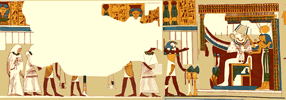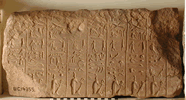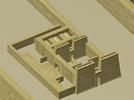Thebes, some tombs of the New Kingdom (about 1550-1069 BC)
The typical (elite) Theban tomb type is the rock cut tomb. Several hundred were cut into the rock on the west of the city. These tombs consist of two main parts. There is the underground burial chamber, most often undecorated and there is the decorated chapel accessible for the living. The chapel was the place for the cult of the dead. The quality of stone is not very good at Thebes, and therefore most of the tomb chapels were plastered and painted rather than decorated with reliefs. Many chapel facades of the 18th and 26th Dynasty were decorated with inscribed rows of clay cones (funerary cones).
There are also other tomb types attested in New Kingdom Thebes. In the early 18th Dynasty mud brick chapels are common. Courtiers of outstanding status were buried in a shaft tomb at a great distance from the cult chapel: the same custom is found for the royal tombs. The tombs of the kings were located in a special valley (Valley of the Kings), while the temple, housing the cult of the king was at the edge of the fields, far away from the tomb: by contrast, royal cult temple and burial chambers are in Old and Middle Kingdom (pyramids) connected.
|
Examples of Theban tomb paintings
|
The tomb of Piay (Theban Tomb 344) click on the image.
Example of a 19th Dynasty Theban tomb, with painted decoration
|
Funerary cones
|
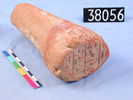 |
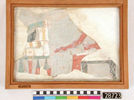 |
Mass burial found under the mortuary temple of Thutmose IV | Amenhotep, son of Hapu | the tomb of Nakht | Valley of the Kings
